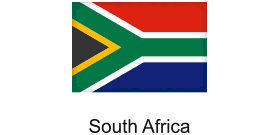 South Africa: Reopneing for international travel?
South Africa: Reopneing for international travel?
An announcement on international travel – so that foreigners can start planning and booking trips to South Africa – will go a long way in aiding South Africa’s economic recovery, says the Bureau of Economic Research (BER) at the University of Stellenbosch. However, given that the recent resurgence of Covid-19 cases in Europe is largely blamed on international travel and social gatherings for leisure purposes, the group said this may still be some months away.
“Crucially, South Africa’s current regulations on the wearing of masks and continued social distancing are much stricter than in most European regions. This could prove an important factor in preventing such a scenario in South Africa,” it said. The BER said that the opening of borders was vital for the local economy, highlighting tourism data published by Statistics South Africa last week which showed that industry came to a near standstill amid the Covid-19 induced lockdown measures.
“The move to Level 2 which allows for more normal trading conditions, including leisure-related interprovincial travel, should support the recovery in the industry. Unfortunately, given the enormous hit to income most businesses were faced with in the past five months, many have permanently closed their doors. “The extent of the permanent damage will only become clear in months to come,” it said.
The country’s current lockdown regulations state that during the national state of disaster all borders of the republic must be closed, except for ports of entry designated by the minister of Home Affairs.
However, the regulations state that a person may be allowed entry into or exit from the republic in the following circumstances:
- Emergency medical attention for a life-threatening condition;
- The evacuation of a South African national or firm resident to the republic;
- The repatriation of a foreign national to his or her country of nationality or permanent residence;
- The return of a South African national or permanent resident to his or her place of employment, study or residence, outside the republic; or
- Daily commuters from neighbouring countries who attend school in the Republic, and who are allowed entry and exit into and from the republic, subject to compliance with protocols.
The Department of Tourism publisheda draft recovery plan at the beginning of August, outlining the country’s response to the coronavirus pandemic and how the tourism industry is likely to be impacted over the coming year.The document provides a detailed breakdown of international and local projections for when tourism will likely open up, using modelling that takes into account various infection patterns and recovery scenarios.The policy document notes that the reopening of international tourism and the country borders will not only be dependent on South Africa’s coronavirus response, but also 44 primary source markets which drive international tourism to the country.
Using this data, the department forecasts a global tourism re-opening in a wide window: between August 2020 and early 2021. “This scenario assumes that the general observed recovery trajectory persists and that progress towards enhanced treatments for Covid-19 by the end of 2020 continue, with an accessible vaccine coming to market by the end of 2021,” the department said.
“Since indications of international border re-openings remain speculative at the time of writing, these dates represent the earliest likely date at which international travel will resume.”
The below model shows the estimated travel periods for South Africa’s primary ‘source countries’ for tourism.
- The model is set between August 2020 and May 2021;
- For domestic travel (travel within the respective country), the opening window is set between August 2020 and mid-February 2021;
- For international travel (to and from the respective country), the opening window is set between November 2020 and May 2021.
While the above model provides a positive picture globally, the risk of localised or global reinfection waves continue to threaten the global economic recovery and the strength and consistency of projected recoveries therefore come with low levels of certainty.
For this reason, the department provided two further global scenarios:
- A more fragile recovery that contains isolated setbacks and takes longer, but still reflects an extension of the current global trajectory;
- A prolonged pandemic where the search for a vaccine proves elusive, herd immunity does not successfully contain transmission and multiple re-infection waves result.
Under the first of these scenarios, the time frame for early Asian/Australasian re-opening moves from July/August 2020 to November 2020, while core markets (the UK, Germany and the US) can only be expected to return after April 2021. The second scenario paints an even bleaker picture, with international outbound travel from Asia picking up between May and July 2021 and travel from core markets only returning from November 2021.
